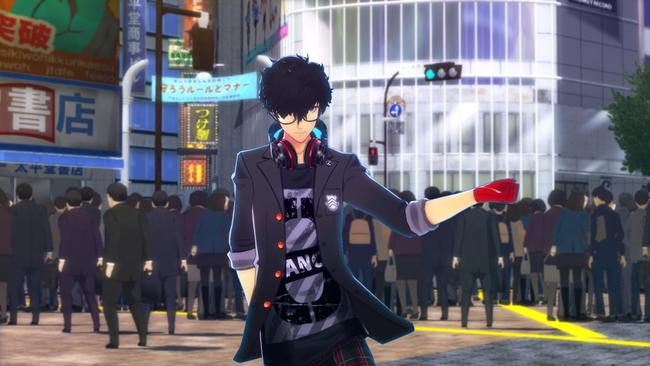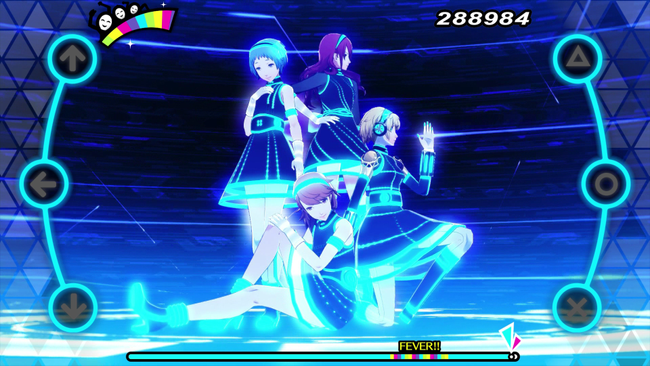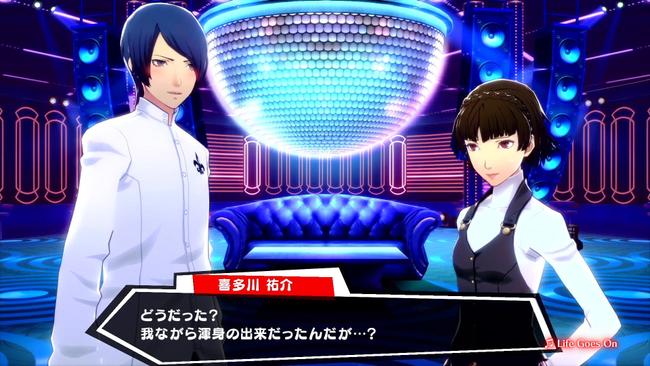
Persona 3: Dancing in Moonlight and Persona 5: Dancing in Starlight Hands-On Impressions from E3 2018
During my time at E3 2018, I had the opportunity to check out Persona 3 Dancing and Persona 5 Dancing. Being the person who covered Persona 4 Dancing for the site (this is all a mouthful), I was excited to see how Atlus improved upon the original formula and whether they learned from the mistakes of the past.
An important constant in the Persona series are the incredible soundtracks composed by the legendary Shoji Meguro who has been around since the very first entry, Revelations: Persona.
Much like in P4D, I felt this emotional surge when I heard a favorite track remixed into a composition that was in some cases even better than the original (as was the case with Snowflakes (Narasaki Remix) and Best Friends (Banvox Remix)).

That same level of talent exists here in Persona 3: Dancing in Moonlight and Persona 5: Dancing in Starlight. There are a wide variety of tracks to be found in both games including extended versions and live performances that really get you into the groove.
During E3, I had the opportunity to check out a playable demo for each game, each including three songs for me to practice my dancing skills on. For Persona 3, there was Burn My Dread, Mass Destruction, and Memories of You. With Persona 5, there was Life Will Change, Rivers in the Desert, and Wake Up, Get Up, Get Out There (a great alarm clock ringtone, by the way). Even if my time with each demo was short, I was already feeling the remixes with my head nodding to the beat and a dumb grin on my face.
Once again, much like in Persona 4 Dancing, every song will feature a main dancer that is exclusive to the track you want to play. You will also be able to bring an additional partner with you to serve as a backup dancer. As you unlock more dancers on the higher difficulties, you’ll be able to choose who you want to tag along with you as you demolish the dance floor.

During the performances, there will be moments where they interact with each other. Other than that, there’s not a whole lot else that affects the routine. And while not every cast member from either game returns with their original voice actor, their impressions are so close that you can hardly tell the difference.
The gameplay mechanics themselves have barely changed in this duology of sorts. Notes still fly out from the center of the screen, each assigned to a particular face button or direction on the D-Pad, and record scratches to keep the combo going. The only new feature is the introduction of double notes, which require you to tap the button twice in quick succession. Otherwise, it’s practically identical in terms of layout.
Now we get to the story, or the lack thereof. You see, I consider myself a bit of a Persona 4 Dancing apologist at times. Okay, sure, the label has been thrust upon me, but I still felt that despite the wider community impressions of the story, it was still a serviceable inclusion that helped carry the narrative. You basically needed to dance the faces off your adversaries to convince them to allow you to pass through to rescue your friends from the treacherous monsters hiding within the Midnight Channel.

In Persona 3 Dancing and Persona 5 Dancing, Atlus has done away with the story mode in its entirety. Instead, the void has been filled with the additional of a Social menu. Rather than have players go through a story that was considered barebones, you will instead experience a series of little vignettes with each character, unlocking ranks along the way - sort of like the Social Links in the Persona games (okay, almost exactly like that).
Once you’ve maxed out a character’s link, you will be able to take a tour of their bedroom and see what they have hidden away in one of their most private spaces. Sure, it isn’t anymore extensive than the original story mode, but it helps give both games a little bit more character development.
At the end of the day, Persona 3 Dancing and Persona 5 Dancing, much like P4D, allows fans to fall back into those worlds while rekindling the adoration they have for the soundtracks and their intriguing cast of characters. We hope to share more of these games including the hopeful localization of their special editions in the coming months before their eventual release in early 2019.